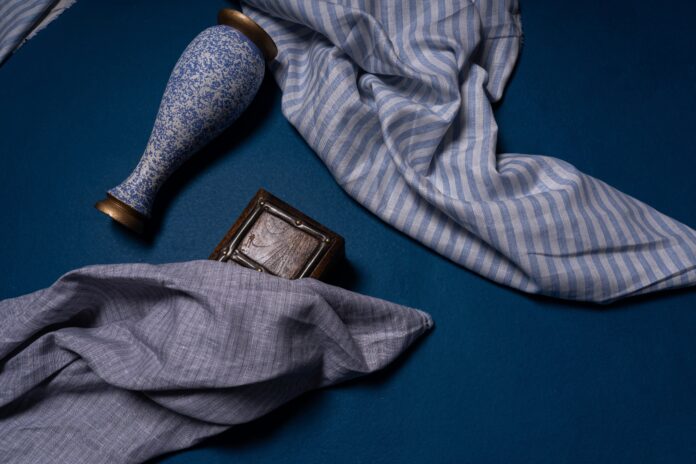When the flax plant is harvested, the stem fibers are gathered and utilized in the manufacturing of linen. Linen Fabric is derived from the Latin word “linum,” which also refers to the flax plant. The flax plant is often referred to by the Greek name “linon.” People have been manufacturing garments made of linen for at least 10,000 years, according to some estimations.
The great majority of the finest flax in the world is produced in Ukraine and Western Europe. Despite the fact that linen is produced in a variety of European countries, the finest textiles are produced in Ireland, Italy, and Belgium. However, the largest majority of the world’s linen is produced in China and Eastern Europe.
Linen’s Distinctive Characteristics
The texture of Linen Fabric is smoother and more breathable than cotton, and it is also more durable. With each wash, the texture becomes softer. If you soak the linen before using it, you may expect it to last longer. Lint and clothes moths find it difficult to attach to, which is a twofold advantage.
Because linen fibers do not expand, it is easy to damage the threads by folding or creasing in the same region repeatedly, such as at the collar, hem, or pressed tablecloth folds. Linen is renowned for creases since it has very little elasticity and bounces back.
Natural linen may be found in a number of colors such as ivory, ecru, brown, and even gray. These are just a handful of the colors available in natural linen (pure white linen is produced by heavy bleaching). Because linen Fabric is made of natural fibers, it may absorb any color that is dyed into it.
There are various types of linen cloth, each with a different weight and degree of quality. Regardless of how crunchy, rough, abrasive, gentle, or smooth it is, Linen fabric can absorb moisture without making the person wearing it feel sticky because of the quickness with which it releases the water that it has absorbed. As a result, individuals often wear it in hot weather or the whole summer.
Slubs, which are clumps of fiber that are randomly scattered throughout the fabric, may form on the linen. For a long time, they were seen as faults, and their appearance was associated with low-quality linen. Slubs, on the other hand, is often seen as a natural feature of linen textiles in contemporary times. The best linen fabric, on the other hand, is made composed of threads that are of the same size throughout.
Making a web of linen fabric by weaving
The quality of the completed linen product is impacted by the conditions under which the flax was produced and the methods used to harvest it. In the manufacturing of high-quality linen, only the longest fibers are utilized. These are derived from either entire flax plants that have been hand-picked or stalk that have been chopped exceedingly close to the ground. Both of these procedures are carried out in the same way. To prepare the plants, a variety of mechanical techniques are utilized, including the following:
- After drying, the plants are “rippled” (also known as “threshed”) and winnowed to remove the seeds.
- Retting is the extraction of flax fibers from the plant’s stem. Microorganisms are utilized in the natural retting process to break down the pectin that is responsible for binding the flax fibers. When it comes to chemical retting, which may be harmful to the environment as well as flax fibers, a trade-off between speed and safety must be made.
- Scutching is the technique of crushing the stalks between metal rollers to remove the woody center sections of the stalk before separating it. This is done prior to splitting the stalk. It’s time to get rid of the fibers.
- Heckling combs are used to separate the shorter flax fibers from the longer, silkier ones before combing them out.
- After that, the fibers are spun into yarn. Linen fabric are created by weaving (and occasionally knitting) this material.
- A piece of cloth may be finished in a variety of ways, including bleaching, dyeing, printing, or coating.
- Cottonizing is a separate method of production. The flax stalks are processed using cotton technology. faster, however, the generated fibers may lose their linen properties in the process
Linen Fabric Applications
Linen fabric are often utilized in the creation of a number of home furnishings such as napkins, placemats, upholstery, and curtains. It is also spun into strong thread, which is subsequently utilized in the production of a wide range of clothes. Embroidery is a common kind of embellishment used on linen fabric, notably on women’s clothing.
There has been a change in linen’s historical background. In the 1970s, the fashion industry accounted for around 5% of worldwide linen fabric consumption. However, the fashion sector now utilizes more than 70% of the world’s linen fabric production.











